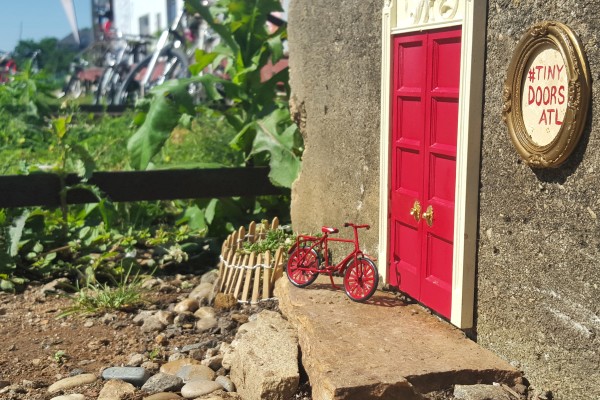In her public art debut in Atlanta’s Forward Warrior and OuterSpace Project, artist Erin Nicole Henry 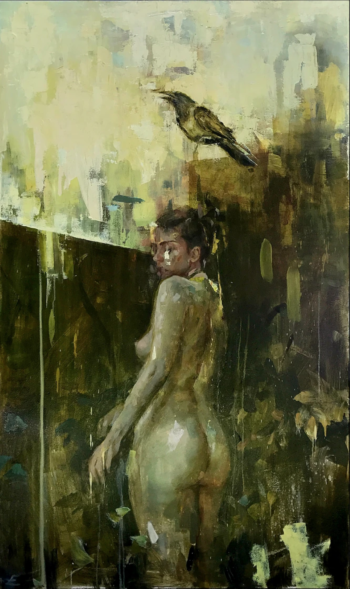 examines her environment through surrealist portraits of the human figure. Her work is intentional, with confident brushstrokes, rich layers of color, and details that pull you in.
examines her environment through surrealist portraits of the human figure. Her work is intentional, with confident brushstrokes, rich layers of color, and details that pull you in.
Before she left art school, Erin transitioned from figurative drawings to oil painting on canvas. Working from her studio at the Goat Farm Arts Center, Erin has chosen to use her growing platform as an artist and a working model to bring spark conversation and bring awareness to issues like sexual harassment and abuse. Whether painting depictions of survivors or by directly contributing proceeds of work to charities, she is an active advocate for human rights.
Erin shares with CommonCreativ her unconventional path to a career as a fine artist, the causes she holds dear, and her excitement about stepping into the public art space.
CommonCreativ: Tell us a little about your upbringing.
Erin Henry: I grew up in Marietta just north of Atlanta, and some of my earliest memories are of drawing. Since I could hold a pencil in my hand, I have been sketching, it was something I loved early on in life. While I loved reading, learning, and school in general, I often felt like an outsider throughout my schooling years. Consequently, I spent a lot of time in solitude focused on drawing. Art became a real passion for me.
CC: What sparked your interest in art?
EH: In elementary and middle school, art classes were my favorite. In the school library, I would check out any “how to draw” books I could find. I would then copy all of the drawings onto paper and sell them to my classmates for 25 cents a piece. I can’t say that I ever made a conscious decision to become an artist. Art has been something I’ve loved my whole life and, as I grew up, I simply realized I wanted to continue making it. At 17 years old I became more serious in my technique and began experimenting with oil painting. Since then, I’ve continued to focus on developing my work.
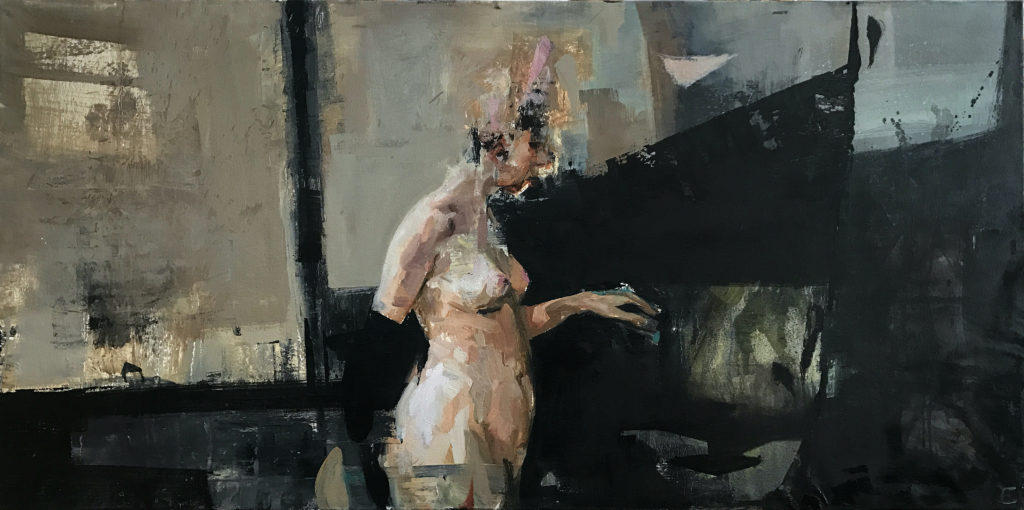
CC: You left art school because you didn’t feel it was the right fit — why is that?
EH: Although I enjoyed the learning environment in art school, I was constantly growing frustrated. I felt that I was being held back from creating the type of work I was most interested in and I didn’t believe the experience was helping me to develop my skills. Professors would often advise students that the lessons they were teaching were preparing us for the “real world.” I thought that was an absurd thing to tell students because we were in the real world. Truthfully, I was eager to get out of the classroom and get to work. I didn’t feel that I was getting the same benefits from art school compared to the amount of effort I was putting in. I quickly realized I was already an artist and I didn’t need a paper degree to affirm that.
CC: What was your process for growing artistically after leaving school?
EH: When I left school, the first thing I did was move into a house with roommates and set up my own studio. From that point on I painted non-stop, all day, every day. Soon after, I was contacted by dk Gallery in Marietta and they offered to represent me. I signed my first contract with them and, to this day, I still show and sell most of my work with dk Gallery.
The most interesting time came from transitioning from school to directly jumping into working full-time as an artist. I had to teach myself a lot more discipline in the studio. When you don’t have teachers assigning your projects, you have to rely on your own determination to challenge yourself. Whether in school or not, the career of an artist is dependent on the ability to be self-motivated.
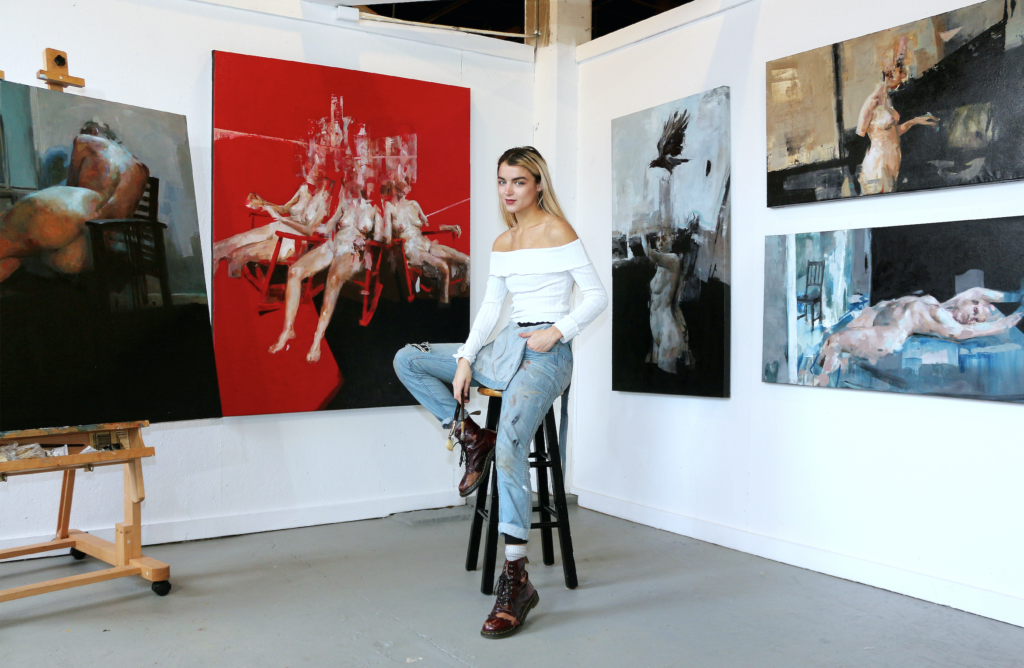
Artist Erin Henry
CC: In your recent group exhibition, Mask at dk Gallery, you showed a series of 50 face paintings titled #itcouldbeyou with a portion of the proceeds donated to SafePath Advocacy Center and liveSAFE Resources. How did you come up with the idea for the series and why is this an important cause to you?
EH: This is an important series to me because of events taking place within our society. Campaigns such as #timesup or the #metoo movement have highlighted the horrendous treatment that victims of abuse, both men and women, have had to endure for many years. My goal with my work was to create something that would raise awareness about the non-discriminatory nature and consequences of these crimes.
It is crucial to open a discussion for victims of abuse to share their story and for others to listen. As a community, this is how we can change the narrative and stand up for these victims. Society has for too long tolerated slut-shaming and victim-blaming and it is unacceptable. By exposing the facts of how easily it could be you, we can learn how to deal with these issues in our world. Most importantly, victims can find healing.
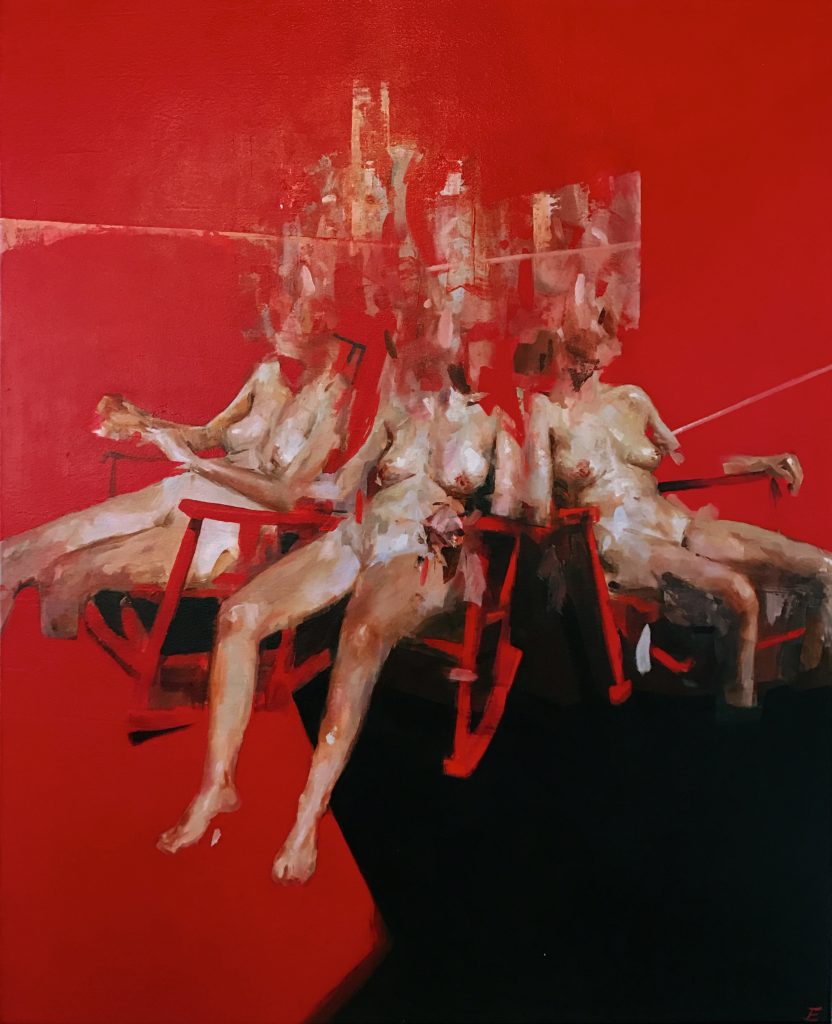 CC: This year you painted your first public mural as part of the Forward Warriors project. Tell me about that experience.
CC: This year you painted your first public mural as part of the Forward Warriors project. Tell me about that experience.
EH: Having the opportunity to paint a mural has been one of the most exciting experiences of this year. There really was no way I could have prepared for this mural from inside of my studio. I did a lot of mental preparation, however it was truly a hands-on learning experience. Since it was my first mural, it was also the first time I painted on such a large scale. I quickly learned and improvised my techniques as I went along. For example, I taped large paint brushes to the end of a long stick to essentially create a giant paint brush.
Rather than using stencils, I opted to gesture out the composition with the brush and later refine it into its final form. I wanted to keep my expressionistic method and style. Having the opportunity to paint alongside seasoned muralists was amazing. The energy of creating side by side with another artist next to me was refreshing.
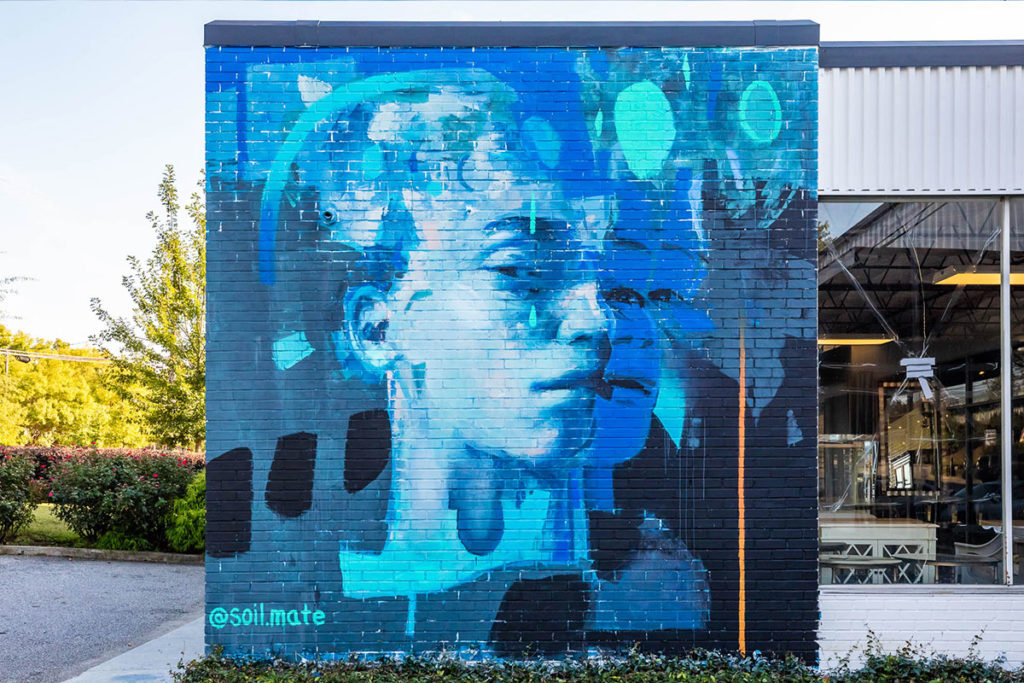 CC: Who are your favorite artists or other Atlanta art organizations?
CC: Who are your favorite artists or other Atlanta art organizations?
EH: I have the happiest memories as a kid taking trips to the Center for Puppetry Arts and watching their puppets shows with my aunt and little brother. They have been a stand-out organization in the community for me.
As for artists, a few names that come to mind are Alex Kanevsky, Sally Mann, and Emilio Villalba. Their processes and personal application to their craft are stunning to watch. They have all been a constant source of inspiration to me.
CC: What do you have in the works that you can share?
EH: I am excited about my second mural for Atlanta’s OuterSpace Project, an event series that merges public art, live music, design, action sports and culture. I also have many more works in progress in the studio, so keep an eye out on my Instagram for updates to see those pieces and where I will be showing next.
See more of Erin’s work on her portfolio site and Instagram.





